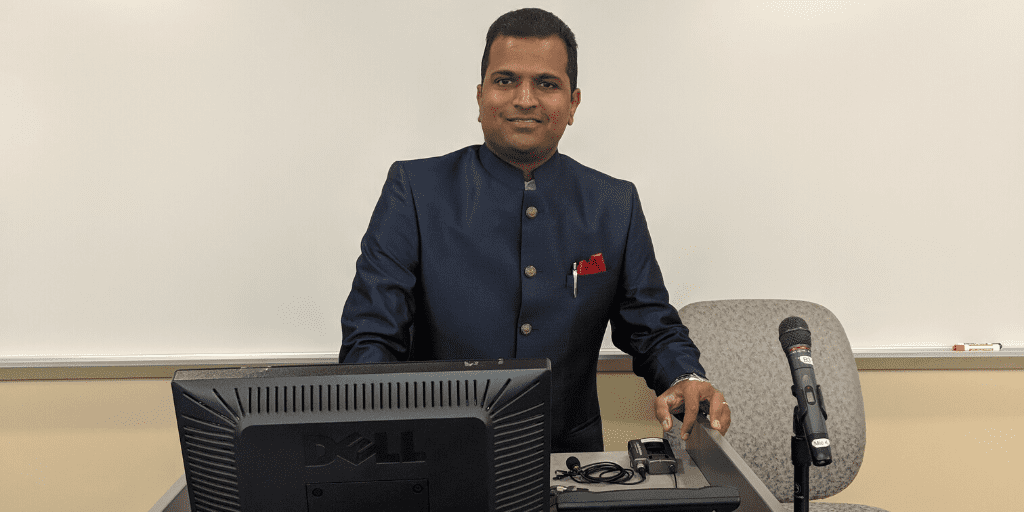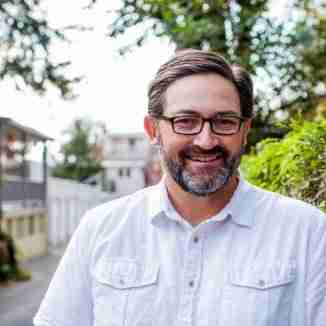
Maximizing Clinical Trial Access, Diversity, and Efficiency are Keys to Optimizing Orphan Drug Development
February 22, 2022
February is Rare Disease Month—an important time when the rare disease community comes together to raise awareness and advocate as one for the approximately 350 million people impacted by rare diseases globally.
The National Institutes of Health (NIH) estimates that there are over 7,000 rare diseases worldwide. Unfortunately, according to the World Economic Forum, only 5% of those suffering from a rare disease have access to treatment. And given that some 80% of rare diseases are genetic in nature, about half of those suffering from rare diseases are children. Diagnosis can take up to seven years and 30% of children with a rare disease die before they turn five. For more data points on rare diseases, click here.
Developing new orphan therapies, increasing access to existing life-saving treatments, and lowering costs is a moral imperative. However, major challenges remain for the rare disease community to achieve these goals.
Like mainstream biopharma drug development, rare disease R&D is negatively impacted by clinical trial design and execution inefficiencies. Difficulties with trial access, enrollment, compliance, retention, diversity, high costs, and significant patient burdens are all bottlenecks that hamper traditional clinical trial success.
In some cases, rare disease therapy development is impacted more severely than traditional biopharma when it comes to clinical trial challenges, as rare disease patient populations are inherently smaller and tend to be more geographically dispersed.
With the advent of new technology and sophisticated cloud-based computing, however, moving away from site-based clinical trials and toward digital, remote, decentralized clinical trial design, and execution is becoming more feasible for the biopharma industry.
Emerging companies like Virginia’s Jeeva Informatics and others are leveraging digital, cloud-based technology to disrupt the traditional, site-based clinical trial paradigm to decentralize trials, reduce trial costs, and make them more accessible to more patients.
“The biggest distinction for people to understand is the difference between virtual and decentralized trials. These are different things but the terms are sometimes used interchangeably. Following the FDA’s terminology, a virtual clinical trial refers to pre-clinical in silico or a simulation using digital twins whereas a decentralized trial takes place from a patient’s home,” shared Dr. Harsha Rajasimha, the CEO and Founder of Jeeva and the Founder and Chairman of IndoUSrare, a rare disease-focused non-profit.
“The biggest challenge for traditional, centralized trials is access to patient populations and the ability to recruit patients fast enough. Traditional clinical trials take place in brick-and-mortar sites, which tend to be academic centers and research hospitals, so people within 50 miles of metro areas or major academic medical centers have the best chance of enrolling or being offered to participate. But most people don’t live in these areas,” stated Rajasimha.
“95% or more live outside of these regions. Access is very limited. Less than 3% of patients with cancer, for example, participate in clinical trials in the U.S. Even in oncology, which has the most research funding and largest patient population, enrollment is a big issue. Even less participate outside of the U.S. and EU,” he added.

Site-based, centralized trials limit access, slow down recruitment, and typically lack patient diversity. 85% of traditional clinical trials get delayed because of enrollment issues, according to Jeeva, which result in huge losses for drug sponsors. Women and minorities are also less likely to enroll because of challenges around travel, childcare, and loss of pay.
“Approximately 80% of all clinical trial participants have historically been caucasian, many of them male, and from affluent backgrounds,” shared Rajasimha.
Only 10% of clinical trials include children, which is particularly impactful to the rare disease community where a high percentage of cases are in the pediatric population.
The pandemic has only exacerbated problems with access, diversity, and execution, as patients became even less likely to physically travel to an onsite trial or, in some cases, clinical trials were stopped entirely because of health and safety protocols. While the pandemic has had its negative impacts, it has also broken down barriers for telehealth practices, including the greater adoption and acceptance of decentralized clinical trials design. However, protocols are still not taking widespread advantage of decentralized trial approaches.
The pandemic propelled decentralized trials from one option to an absolute necessity.
Jeeva, and other companies in this space, see the current environment as a great opportunity to help drug sponsors decentralize clinical trials and eliminate inefficiencies, reduce R&D costs, increase the likelihood of commercial success, and ultimately lower costs to patients, all while democratizing access to clinical trials for underserved and underrepresented patient populations globally.
“82% of Americans have internet access and can seek out information about clinical trials. Clinical trial sponsors can now find patients online and educate and engage them. Globally, 60% of people have access to a stable internet connection. Decentralized clinical trials offer a tremendous opportunity to significantly increase U.S. and global clinical trial participation, which would be a gamechanger for industry and patients,” stated Rajasimha.
Faster, more efficient, and diverse clinical trials will have a huge impact on drug development. Under the current traditional clinical trial model, a typical drug costs $2.5B to bring to market on average. Cell and gene therapies are the most advanced form of orphan therapies and often cost significantly more to patients. Decentralized trials have the potential to bring more drugs to market faster and for less money, increasing patient access to life-changing therapies at more accessible price points.
The rare disease community, in particular, will benefit greatly from wide industry adoption of decentralized clinical trials.
Should the cost to commercialize drugs lower, it’s entirely possible that more biopharma companies could make the economic case to pursue more rare disease drugs and therapies despite their inherently smaller market size.
However, some of the challenges around clinical trial participation within the rare disease space are unique.
“Rare disease patients are few and geographically dispersed. There are ultra-rare diseases where there might be 100 patients in the world dispersed across different geographic areas and who come from different cultures and circumstances. Increasing access through decentralized trials and internet enrollment could make reaching these patients more realistic but human-centric issues have to be overcome,” stated Rajasimha.
“It’s also important to consider that 50% of rare disease patients are children, which requires parents or guardians to consent to clinical trial participation. So, you’re not dealing with one adult agreeing and consenting, it could be a family, caretakers, or sometimes even two divorced parents, who might not be in agreement. Informed consent or assent is a major challenge, particularly in the rare disease community,” he added.
“Finally, rare disease patients are often very sick and already unfortunately feel like a financial burden to their family so forcing a parent to take time off is often an impediment to enrollment. Plus, many rare disease patients are also immunocompromised, which makes on-site visits, particularly during a pandemic, very risky,” he added.
Decentralized clinical trials can significantly reduce barriers to enrollment by unburdening rare disease patients and families from risks inherent to the more traditional, on-site clinical trial process.
“For the last decade, we’ve been listening to patients, researchers, and doctors, including those in the rare disease space. We’ve interviewed over 2,500 stakeholders and developed a scalable, modular SaaS cloud platform to empower drug sponsors to decentralize their trials,” stated Rajasimha.
“Enrollment remains the biggest bottleneck for clinical trials. Patients and companies can’t wait 10 or 12 from basic research to regulatory approval. We need to make the process faster and cheaper. We need to make drug development work for all patients, not just patients in the U.S. Tech doesn’t solve all problems; we need to make sure our products are human-centric and fit with how we work as humans,” added Rajasimha.
Rajasimha continued, “Our goal is to enable everyone in the world that has access to a connected device the ability to participate in a clinical trial.”
For Rajasimha, the rare disease community and Rare Disease Month, which culminates on Rare Disease Day on February 28th, is close to his heart. He and his wife lost a child to a rare disease and he has been an ardent advocate for the rare disease community for years; he founded IndoUSrare, a non-profit organization focused on rare disease advocacy in the U.S., India, and globally.
“Rare Disease Month is so important to our community. We are extra-active this month. The number of events, panels, and collaborations is outstanding. Most of the people in this community have a personal connection to it and want to help other families going through similar challenges. The rare disease family is so supportive and collaborative,” stated Rajasimha.
“My organization is all about fostering cross-border, international collaboration on rare disease issues. IndoUSrare will be co-hosting an event on Rare Disease Day celebrating 30 years since the first ‘orphan’ drug approval for Gaucher Disease. Since that time we’ve gone from three orphan drug approvals to over 700, which is an amazing accomplishment that we will be celebrating at the end of this important month,” he said.
“The future is very promising. And this is what Rare Disease Month is all about—engagement, collaboration, and hope,” added Rajasimha.
- About the Author
- Latest Posts
Steve brings nearly twenty years of experience in marketing and content creation to the WorkForce Genetics team. He loves writing engaging content and working with partners, companies, and individuals to share their unique stories and showcase their work. Steve holds a BA in English from Providence College and an MA in American Literature from Montclair State University. He lives in Frederick, Maryland with his wife, two sons, and the family dog.






